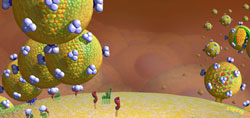Based on new evidence assessing benefits and risks, the WHO recommends the use of the HIV drug dolutegravir (DTG) as the preferred first-line and second-line treatment for all populations, including pregnant women and those of childbearing potential.
Initial studies had highlighted a possible link between DTG and neural tube defects (birth defects of the brain and spinal cord that cause conditions such as spina bifida) in infants born to women using the drug at the time of conception. This potential safety concern was reported in 2018 from a study in Botswana that found 4 cases of neural tube defects out of 426 women who became pregnant while taking DTG (see Lancet below).
Based on these preliminary findings, many countries advised pregnant women and women of childbearing potential to take an efavirenz (EFV; non-nucleoside) based regimen instead. The combination with tenofovir and emtricitabine (Atripla) was a drug that saved a lot of lives and was one of the best at the time. It was only after patients were switched to more modern combinations that we fully appreciated the degree of CNS toxicity, especially “vivid dreams,” headache and insomnia. In the interest of transparency, the efavirenz recommended dose reduced to 400 mg, down from the 600mg in the original formulation.
New data from two large clinical trials comparing the efficacy and safety of DTG and EFV in Africa have now expanded the evidence base. The risks of neural tube defects are significantly lower than what the initial studies may have suggested.
The guidelines group also considered mathematical models of the benefits and harms associated with the two drugs; the values and preferences of people living with HIV, as well as factors related to implementation of HIV programs in different countries, and cost. DTG is a drug that is more effective, easier to take and has fewer side effects than alternative drugs that are currently used. DTG also has a high genetic barrier to developing drug resistance, which is important given the rising trend of resistance to EFV and nevirapine-based regimens. In 2019, 12 out of 18 countries surveyed by WHO reported pre-treatment drug resistance levels exceeding the recommended threshold of 10%.
In 2019, 82 low- and middle-income countries reported to be transitioning to DTG-based HIV treatment regimens. The new updated recommendations aim to help more countries improve their HIV policies. As for any medications, informed choice is important. Every treatment decision needs to be based on an informed discussion with the health provider weighing the benefits and potential risks. All of above findings informed the decision to update the 2019 guidelines and use dolutegravir.
References:
https://www.thelancet.com/journals/lanhiv/article/PIIS2352-3018(18)30317-5/fulltext
http://www.aidsmap.com/news/jul-2018/dolutegravir-update-infant-neural-tube-defects-botswana
7/24/2019 6:39 PM
Dolutegravir and Neural Tube Defects
Source: Reporting from Mexico City for PRN News: Bill Valenti, MD

